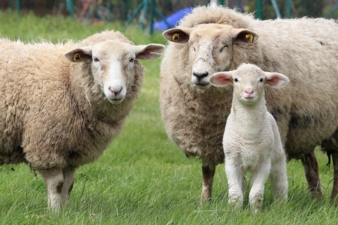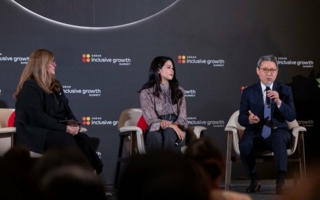25/08/2016 – Special leather — auf Deutsch lesen
When sheep becomes lamb
However, “lamb” doesn’t always mean lamb, especially when old sheepskins are rebranded as lamb jackets.
Consumers find it difficult to assess quality criteria and standards without expert assistance. The credo “leather, the most complex natural material requires expert advice” was lost with the rise of online and self-service shopping. Comprehensive and consumer-friendly displays of leather products have vanished along with dedicated leather sections in fashion retail and department stores and catalogues. Today’s retailers prefer textile suppliers that occasionally accessorise their collections with leather jackets, putting leather clothing manufacturers at a disadvantage when acquiring selling space, and creating a challenging market environment for them. People on the hunt for leather jackets have to scour the shops and countless pages of catalogues and make do without assistance.
These days, consumer choice is based merely on look, price and if possible feel.The decline in revenues in the leather garment industry is not, however, solely attributable to changed market structures. Fashion itself has played a role as well with nylon down jackets being worn up and down the high streets and innovative synthetics and fake leathers taking over the clothing market. Several Asian leather manufacturers have already switched from genuine to faux leather. These artificial materials are also subject to textile labelling regulations.Established and traditional leather suppliers are familiar with the ups and downs of this cyclical industry. When leather is in fashion, the market is flooded with cheap pigskin jackets, followed by industry outsiders jumping on the bandwagon, e. g. coffee chains or discount supermarkets.
The newcomers quickly move on, leaving behind around half a dozen industry veterans that have asserted themselves over the years through their professionalism and quality. They compensate for the downturn in business in Germany by opening up new export markets and developing and manufacturing leather designs for high-profile textile brands.Budget sectors such as young fashion or chain retailers, that offer just one set of leather jackets – same cut, in two colours and different sizes – on a fortnightly rotation, purchase their products from Chinese, Indian and Pakistani suppliers.
The current retail price for so-called lamb jackets, also available online and per catalogue order, is € 199.90. Consumers will find that jackets made of lamb Napa leather range in price from € 199 to over € 1,000. How can that be possible?The vague and non-restricted lamb label allows for these enormous price discrepancies. Both products genuinely made from small lambskins and articles made from old sheepskins as well as everything in between are branded and sold as lamb. Industry professionals are aware of the vast spectrum of quality and price and the reasons behind it, namely: Age – Breed – Provenance – Production process.
You can read the detailed article from Sonja Langer-Korsch in the current issue 9-10/2016.




